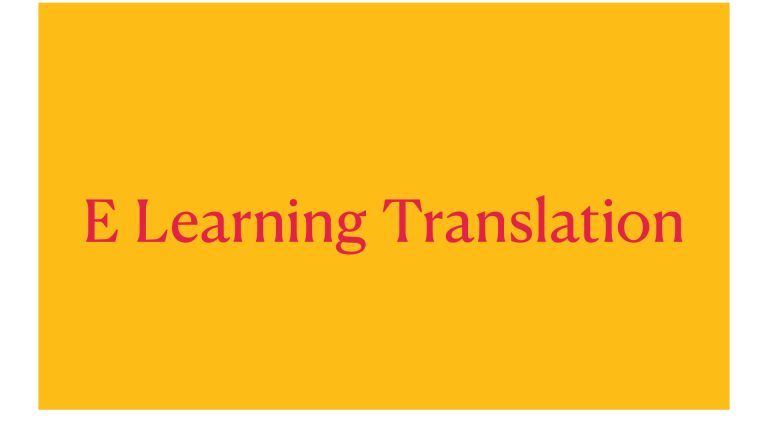What does website globalization mean? In simple terms, website globalization is like making your website friendly for people with different native languages. Mind you, it involves more than just translating the words on your site into a different language. It is all about understanding different cultures, preferences, and customs and then adapting your website to fit those differences.
In a nutshell, you can say that globalizing a website means presenting your website to the world in the language they understand. For effective globalization, it encompasses a multitude of factors that can either propel your business to international success or hinder its growth.
Want to learn more about website globalization? Then stick with us in this blog as we delve into the intricacies of website globalization. In this blog post, we offer insights on website globalization, its key components, challenges, and pitfalls. And most importantly, how do you globalize a website?
So, let’s get started.
![An Ultimate Guide to Effective Website Globalization [2024] - A comprehensive roadmap to optimizing your website for international audiences and expanding global reach.](https://www.naargmedia.com/wp-content/uploads/2024/04/An-Ultimate-Guide-to-Effective-Website-Globalization-2024.webp)
What is Website Globalization?
Whether you like it or not, having a website and a business gives you instant worldwide visibility. Your website is out there for all to see. So, why not use this international exposure by implementing website globalization for your business? Now, before implementing globalization, we need to understand what website globalization is. It is a strategic process of adapting and optimizing a website to cater to a diverse international audience effectively.
When we talk about this globalization, we mean more than just translating content into different languages; we mean encompassing a comprehensive approach to ensure your website resonates with your target audience from various cultural backgrounds and geographical locations. As you know, the English language accounts for only 25% of the total internet users in the world. That makes website globalization even more essential to incorporate into your business. For this, you need to consider essential aspects.
From cultural adaptation and language localization to technical considerations like geolocation and international SEO, Website globalization aims to create a seamless and personalized user experience for your target audience. Once you embrace the globalization of your website, your business can expand its reach, enhance user engagement, and even capitalize on opportunities in global markets.
Key Components of Website Globalization
Globalization involves several key components to effectively cater to diverse target audiences. We have listed below several key components of website globalization to help you understand it better.
1. Language Localization
When you translate your website content into multiple languages, it makes it accessible to your target audience from different linguistic backgrounds. It includes not only textual content but also elements like navigation, menus, buttons, and forms.
2. Cultural Adaptation
Incorporating and understanding cultural nuances, symbols, imagery, and colors that resonate with your target audience. It ensures that your website feels familiar and relevant to your target audience across different cultures.
3. Geolocation
Nowadays, geolocation technology delivers personalized content based on your user’s location. This includes displaying region-specific promotions, product availability, and pricing.
4. Performance Optimization
Optimizing your website loading times and performance helps to accommodate your target audience with internet speeds and device capabilities. It involves minimizing file sizes, leveraging content delivery networks, and implementing caching machines.
Incorporating these key components into your business can create a globally optimized website that effectively engages and converts your target audience from diverse cultural and geographical backgrounds.
Challenges and Pitfalls in Website Globalization
Challenges are inevitable, and website globalization presents several challenges and pitfalls that you must navigate to ensure a successful international expansion.
1. Language Accuracy
Accurate language translations can be challenging, especially for content with technical terminology or cultural references. Poorly translated content can lead to misunderstandings and damage your brand’s reputation.
2. Cultural Sensitivity
When you adapt website content to different cultures, it requires a deep understanding of local customs, taboos, and traditions. Failure to consider cultural sensitivities can result in offensive or inappropriate messaging that might alienate a potential target audience.
3. Technical Compatibility
It is important to ensure that your website functions properly across all devices and browsers, and the internet speed is also a crucial factor for a positive user experience. Technical compatibility and issues like slow loading times or broken features can easily frustrate your target audience and deter them from engaging with your website.
4. Maintenance and Updates
Your globalized website needs to be up-to-date with new content, product offerings, and technical improvements and requires ongoing resources and support. And if regular updates get neglected, it can result in outdated information and a decline in user engagement.
By addressing these pitfalls and challenges, your business can mitigate risks and maximize the effectiveness of its website globalization efforts.
How to Globalize a Website?
When you globalize a website, it involves making it accessible and appealing to users from different regions and cultures all around the world. Listed below are some steps to globalize a website effectively.
1. Market Research
For the globalization of your website, market research is an essential step. You need to understand your target audience in different regions and identify their language, preferences, cultures, and behaviors. Also, it is essential to analyze your competitor’s strategies in those regions.
2. Website Infrastructure
Always choose a content management system that supports multilingual content management and localization workflows. Also, consider using content delivery networks to ensure fast loading times for your target audience in different regions.
3. User Experience (UX)
Always ensure navigation for users of all languages. And test navigation menus and links to verify that they work correctly with different languages. Also adapt input fields to accommodate different address formats, phone number formats, and other regional variations.
4. Continuous Improvement
Make sure to gather feedback from users in different regions to identify areas for improvement. And monitor your website analytics to track performance metrics across different target markets. Lastly, stay updated on cultural trends. Technological advancements, and all the regulatory changes that may impact your global website strategy.
Following these steps will help you effectively globalize your website and attract your target audience from diverse regions around the world.
Whether you need website translation or localization services, Naarg covers it all and much more!
Get in touch with us today!




